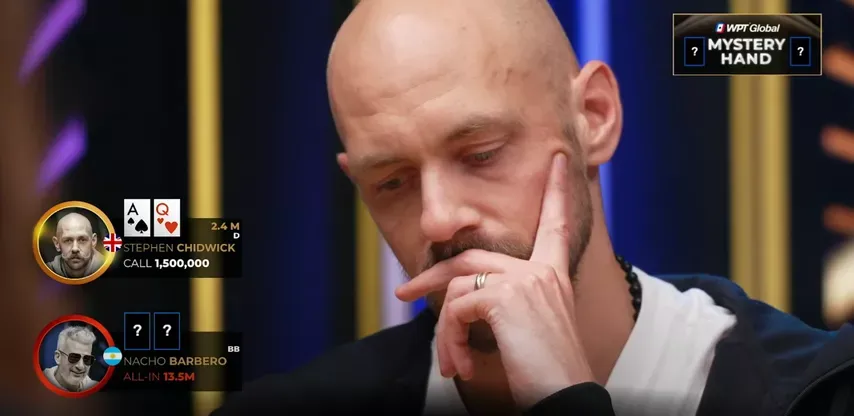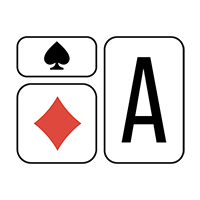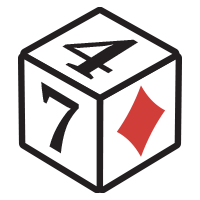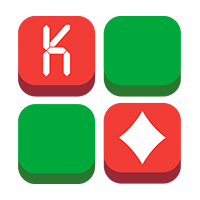I was planning on attending Triton Montenegro and writing about a hand a day I played while over there. I ended up bailing last-minute and am watching the streams from home like all of you. I will be writing about hands played on stream from other people, and once Triton Montenegro is over, I will write about similar mistakes I made to the ones I saw on stream.
In the POTD Discord for premium subscribers, I wrote #onemorething about POTD #39 and the recent trend of c-betting exactly half pot in three-bet pots, and wrote:
It’s always interesting to see how plays which begin as unusual plays spread throughout the poker world. Most start from one player or a group of players at high stakes, spread through highs stakes and trickle down to the point where they’re being used frequently at low and mid stakes. Frequently betting half pot on a variety of boards in three bet pots is one of those plays, but so is frequently betting 10% pot in three bet pots. At the time this hand was played many players, including me, were blindly betting 25-33% pot.
Minbetting, overbetting, leading after check calling the previous street; were rarely done and have been common in the solver era, but no play has generated more discussion than leaving one chip behind in tournaments. When Stephen Chidwick did it against me in POTD #10, people were so confused by the play that people accused Stephen of chip dumping, and the press-shy Chidwick needed to give an interview to PokerNews to explain (https://www.pokernews.com/strategy/betting-it-all-minus-one-chip-chidwick-explains-33101.htm) his play. Six years later this play is so controversial that it recently came under fire from GGPoker Pro and interesting Twitter user Daniel Negreanu. There are two common versions of this play. One occurs on the river, and the logic is that if you are bluffing, you can save yourself the proverbial chip and a chair and hope to spin it up. If you have a value bet, you are losing a tiny amount of EV because your bet is a little smaller, but that EV loss is smaller thant the gains from staying in the tournament. The other version is preflop, where you leave yourself some chips behind so that if several other people go all-in behind you, you can fold and try to ladder.

The first type of this play is one worth implementing. If you always call all-in with a value bet after getting shoved on; it’s very hard for you to make a big mistake. Even if your opponent occasionally re-bluffs your bluff by going all-in with nothing, they will also do that into your value bets, so in the long run it should even out. The gains of leaving one chip behind are marginal; the most likely outcome by far is you lose your next all-in and bust the tournament anyways, but if you can spin up your stack, it is worth so much money that it’s a good lottery ticket to give yourself.
Leaving one chip behind preflop is something I’d caution people from doing. The reason I like the first play is that it is a freeroll of sorts and can never be too costly; it doesn’t even cost that much in chip EV. The second play loses a ton of chip EV and, depending on the circumstances, can lose a ton of $EV. If you play perfectly after shoving 90% of your stack preflop, you will generate a tiny amount of EV when several people go all-in behind you. If you don’t play perfectly, you will inevitably make mistakes that are so large they will outnumber any gains made by making correct folds. In Triton Montenegro, Kristen Foxen had one of those hands, and I will be writing about it today.
Triton Montenegro $30k Final Table, 5 remaining, blinds 100k/200k/200k
Preflop: Kristen Foxen raises to 1.5m, leaving 125k behind, from the CO with . Stephen Chidwick calls the 1.5m from the button with , leaving 2.4m behind. Nacho Barbero shoves 14m from the BB with . Foxen tanks and folds; Chidwick tanks even longer and folds.

Chidwick thinks even longer and also folds.
What She Was Thinking
My normal disclaimer here: I can’t get into her head, but I think she thought with 8 BBs in the CO K4 suited was a shove, and that once Stevie entered the pot and Nacho shoved, she would rather fold and try to ladder than try to win a three way all-in.
What Sam Says
I lead off this article writing about a boring play-- betting half pot in a three-bet pot-- before discussing the sexy play of leaving one chip behind; that was foreshadowing. I’ve seen this hand discussed a lot on social media, and one thing I haven’t seen mentioned is that the initial shove is too loose by at least three and maybe five pips. K4 suited is a bottom-of-range shove for chips, and I would not want to take a bottom-of-range shove for chips into the BB who is the chip leader. The lesson here is that the way to generate EV is by playing strong poker with good fundamentals. If you play the most common nodes well, you will be a winning player regardless of whether you play esoteric uncommon nodes well. If you aren’t sure if you know how to play the esoteric nodes, avoid them unless you have a good reason to do so. I am reminded of hands where I’ve found an unusual flop lead, but then I don’t know how to play the turn once my opponent calls. A preflop/flop/turn play is only worth something if you can play the entire game tree competently. Having the correct CO shoving range here is worth much more in the long run than eeking out EV by playing non-AI games.
As for what happens once Stevie calls and Nacho goes all-in: She needs to call. The way the hand played out shows why. Had Stevie shoved and Nacho called, so Stevie was guaranteed to be all-in, you could fold and hope to ladder. But since Stevie has position on you, he can also fold and wait for you to be blinded all-in in two hands. Kristen is shoving 8 BBs in the CO; her range is weak enough that Stevie can call as wide as A9 offsuit on the button. Stevie will regularly call 40% of his stack and fold to a shove from Nacho. This means you are getting an even better price to call all-in, because he will fold sometimes once you’re all-in; it also means when you fold, he will often fold himself, so you aren’t even guaranteed an all-in collision.

Types of Errors
Too much money and too little money.
Play stupid games, win stupid prizes.
Grade
The shove is too loose, but the mistake itself is cheap, especially if it's a one-off rather than a pattern. You'll be shoving a little more often, and you'll have a little less equity when all-in, but it's not a disaster. The subsequent fold, on the other hand, is one of the most expensive mistakes you can make in poker. If you average it out, I'm giving this hand a 2+.
Comment from Michael "Phanteidos1" Ender:
Yea when I saw this, I felt she was in the wrong position to do this... If she is in the BTN and Stevie raises in the CO then she can shove and leave herself 1bb behind because if the BB shoves and Stevie calls, she can decide to fold and ladder. But here Stevie is still to act before her and will often fold to a shove (his range consist of a lot weaker hands of AQ that were calling 8bbs but not a shove). You leave yourself 1 chip behind when you can see the full action and then make a decision, no?
Sam Greenwood's answer:
This question is too complicated to give a simple yes or no answer to. It depends. Sometimes I ~half stack, sometimes I leave one chip behind, sometimes I shove. Here is a simple example if I have 12bbs OTB the SB has 40bbs and the BB has 8bbs. There is no real reason to leave one chip behind because if there is a three way all-in you will always cover the BB, but making it 6bbs could set you up in a situation where the SB calls, the BB calls and then ends up folding postflop, which is a disaster for us.













